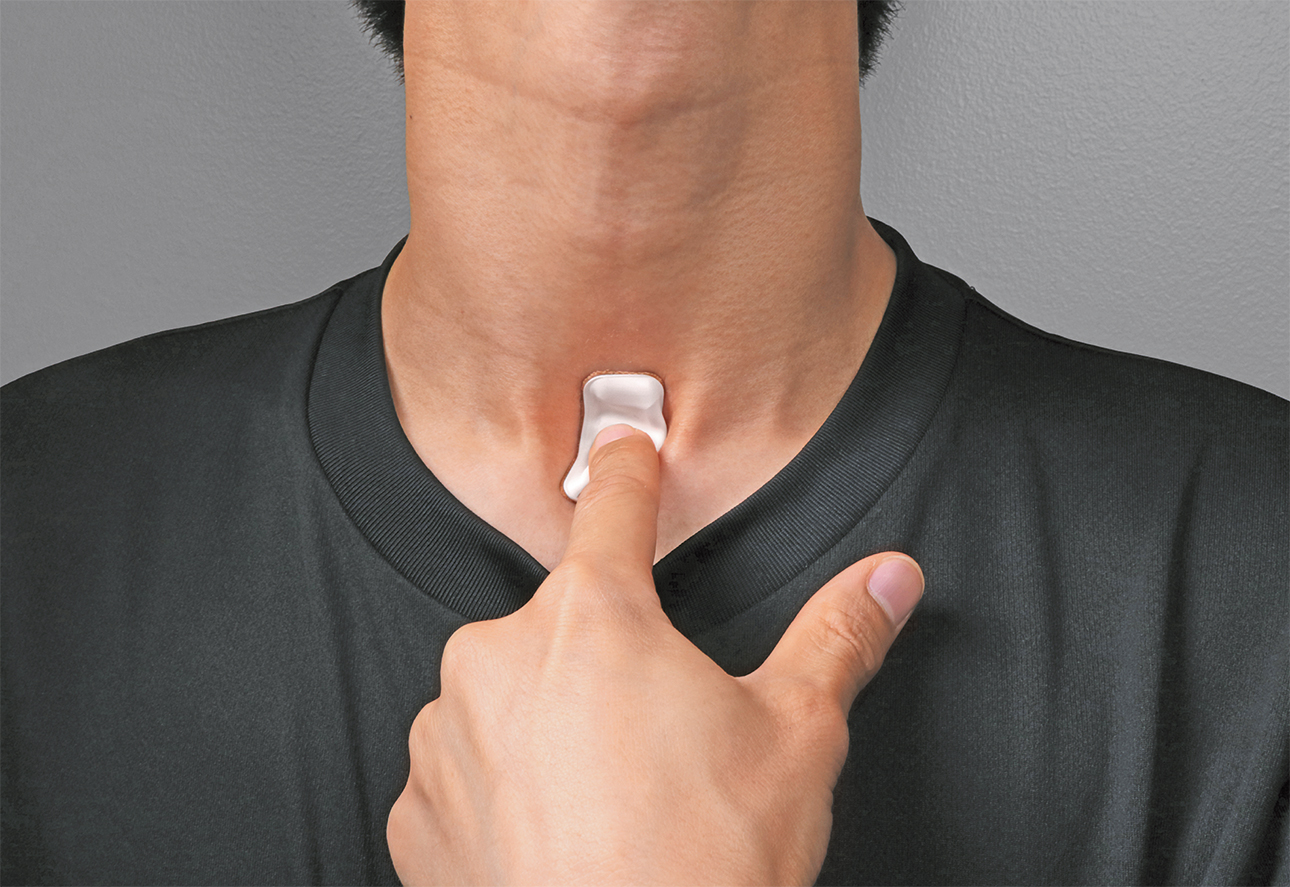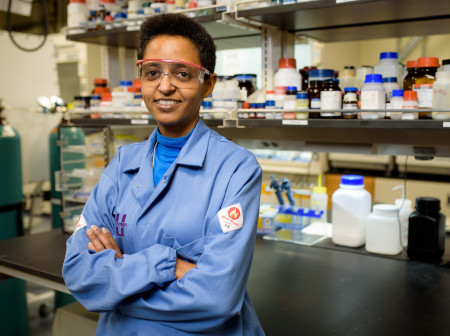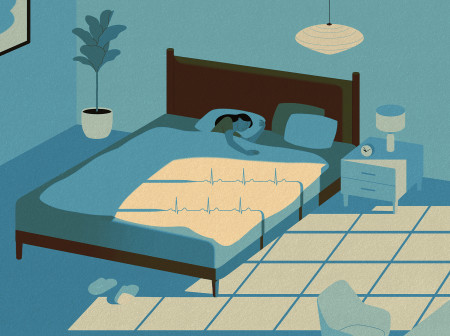Researchers at Northwestern and the Shirley Ryan AbilityLab have developed a novel wearable device and custom data algorithms to catch early signs and symptoms associated with COVID-19 and to monitor patients as the illness progresses.
About the size of a postage stamp, the soft, thin, flexible, wireless device sits just below the suprasternal notch — the visible dip at the base of the throat — and can be worn 24/7. It measures and interprets coughing, respiratory activity, heart rate and body temperature to uncover subtle but potentially lifesaving insights. The device transmits a continuous stream of data to a privacy-protected cloud, where automated algorithms produce graphical summaries to facilitate rapid, remote monitoring.

John Rogers, the Louis Simpson and Kimberly Querrey Professor of Materials Science and Engineering, led the development of the device.
John Rogers, the Louis Simpson and Kimberly Querrey Professor of Materials Science and Engineering, led the development of the device. Arun Jayaraman, director of the Max Näder Center for Rehabilitation Technologies and Outcomes Research at the Shirley Ryan AbilityLab, led the creation of the custom algorithms.
“We’re fully engaged in contributing our expertise in bioelectronic engineering to help address the pandemic, using technologies that we are able to deploy now, for immediate use on actual patients and other affected individuals,” Rogers says.
In April, Rogers and his team began using its innovations in a study of COVID-19 patients and the health care workers who treat them, both in clinic and at home. Thanks to a generous gift from Northwestern trustees Kimberly K. Querrey and Louis A. Simpson ’58, by May the researchers were producing dozens of devices per week. By leveraging manufacturing tools available through the Simpson Querrey Biomedical Research Center, they were able to bypass the need for external vendors and complex supply chains.
“Quickly developing new technologies internally has never been more crucial,” Querrey says. “This work proves the power of STEM and why it’s so critical to the University and beyond to have world-class researchers like John.”
Rogers and his colleagues received a $200,000 Rapid Response Research grant from the National Science Foundation, which will help them add a sensor to measure oxygen levels in the blood — low oxygen level is a sign of COVID-19 that often goes undetected.




Reader Responses
No one has commented on this page yet.
Submit a Response